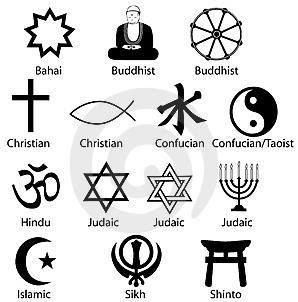- Hinduism is the world's third largest religion with over one billion adherents. Out of these billion followers, about 905 million live in India.
- Hinduism is often referred to as Sanātana Dharma by its practitioners. The term refers to a Sanskrit phrase, which means ‘the eternal law’.
- Hinduism's vast body of scriptures is divided into Śruti (which means "revealed") and Smriti (which means "remembered"). These Hindu scriptures discuss theology, philosophy and mythology, and provide information on the practice of the Hindudharma.
- The fundamentals of Ayurveda can be found in Hindu scriptures called the Vedas, which are considered as the ancient Indian books of wisdom.
- The Hindu scriptures refer to celestial entities or the deities as Devas (gods) and Devis (goddesses). Read more about Hindu gods.
- Most Hindus believe that the spirit or soul which is referred to the true "self" of every person and called as the ātman, is eternal.
- Karma is a concept in Hinduism which explains causality by means of a concept in which beneficial effects are derived from good deeds of the past and harmful effects are a consequence of the immoral or harmful deeds in the past, thus creating a cycle of actions and reactions throughout a person's reincarnated lives.
- Classical Hindu thought accepts four important objectives of human life, known as the puruṣārthas, which include dharma(righteousness), artha (livelihood, wealth), kāma (sensual pleasure) and moksha (liberation, freedom).
- There are four methods of yogas for Hindus, which have been laid down by sages as means to reach the goal. These methods or paths are Bhakti Yoga (the path of love and devotion), Karma Yoga (the path of right action), Rāja Yoga (the path of meditation) and Jnana Yoga (the path of wisdom).
- Hindu practices generally involve seeking awareness of God and seeking blessings from Devas and are meant to help one think of divinity in everyday life. Hindus engage in worship of the Gods, which is referred to as puja.
- The popular Hindu epics Mahabharata and Ramayana serve as both religious scriptures and a rich source of guiding principles of philosophy and morality.
- Hinduism has a system of symbolism and iconography, which is used to represent the sacred in art, architecture, literature and worship. Some of the popular symbols and icons in Hinduism are the syllable Om and the swastika
- Hindus advocate the practice of ahimsa (non-violence) and respect for all life.
Tuesday, 28 June 2011
Religion Of India
Subscribe to:
Post Comments (Atom)







No comments:
Post a Comment